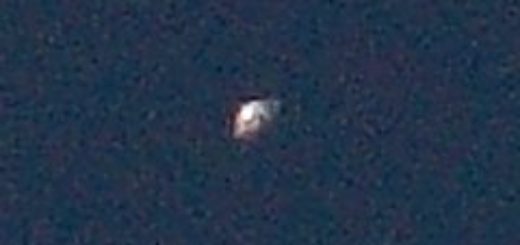Mysterious radio signal found in space and astronomers aren’t sure where it’s coming from

A mysterious fast radio burst (FRB) that hit Earth late last month has been detected. While this type of activity is by no means common, it is not unusual.
The part that’s puzzling scientists is not the radio burst itself, but the fact that its frequency is nearly 200 megahertz lower than any other radio burst ever detected.
The signal was spotted by a telescope in Canada and posted to The Astronomer’s Telegram on July 25 and has been dubbed FRB 180725A after the year, month and day it was discovered.
The FRB was discovered at a frequency of 580 MHz — significantly lower than others detected in the past.
MASSIVE GLOWING ‘ROGUE’ PLANET SPOTTED ‘DRIFTING’ IN SPACE
The discoverer, Patrick Boyle of McGill University, acknowledged that it was not immediately clear what the FRB was, adding that other bursts with low frequencies have been found and are not from terrestrial origins.
“Additional FRBs have been found since FRB 180725A and some have flux at frequencies as low as 400 MHz,” Boyle wrote. “These events have occurred during both the day and night and their arrival times are not correlated with known on-site activities or other known sources of terrestrial RFI. ”
While Astronomer’s Telegram lets astronomers submit genuine claims, FRB 180725A has not yet been independently verified, leaving the possibility that it could be explained.
USA Today reports that in 1998 a radio signal found in space was later found to have originated from a microwave.
In March of this year, an astronomer thought he had discovered a new bright star, according to LiveScience. It turns out, the astronomer had actually rediscovered Mars.
Still, FRBs, which were first discovered in 2007, are relatively new to astronomers and their origins are mysterious. According to ScienceAlert, some of them can generate as much energy as 500 million Suns in a few milliseconds.
WE NEED TO KEEP LOOKING FOR ALIENS, SCIENTISTS TELL SENATORS
One FRB has been found to repeat itself from the same location, allowing scientists to locate its origin outside the Milky Way galaxy.
The origin of the FRB discovered in late July may have stemmed from a number of events, such as evaporating black holes and erupting neutron stars, according to Nature.
However, astronomers, including those from Harvard, have also previously said they could not rule out that FRBs may stem from advanced civilizations deep in space.



 Creators of mankind
Creators of mankind Description of “Tall white aliens”
Description of “Tall white aliens” Where they came from?
Where they came from? About hostile civilizations
About hostile civilizations The war for the Earth
The war for the Earth “Tall white aliens” about eternal life
“Tall white aliens” about eternal life Video: “Nordic aliens”
Video: “Nordic aliens” Aliens
Aliens Alien encounters
Alien encounters The aliens base
The aliens base UFO
UFO Technology UFO
Technology UFO Underground civilization
Underground civilization Ancient alien artifacts
Ancient alien artifacts Military and UFO
Military and UFO Mysteries and hypotheses
Mysteries and hypotheses Scientific facts
Scientific facts


















